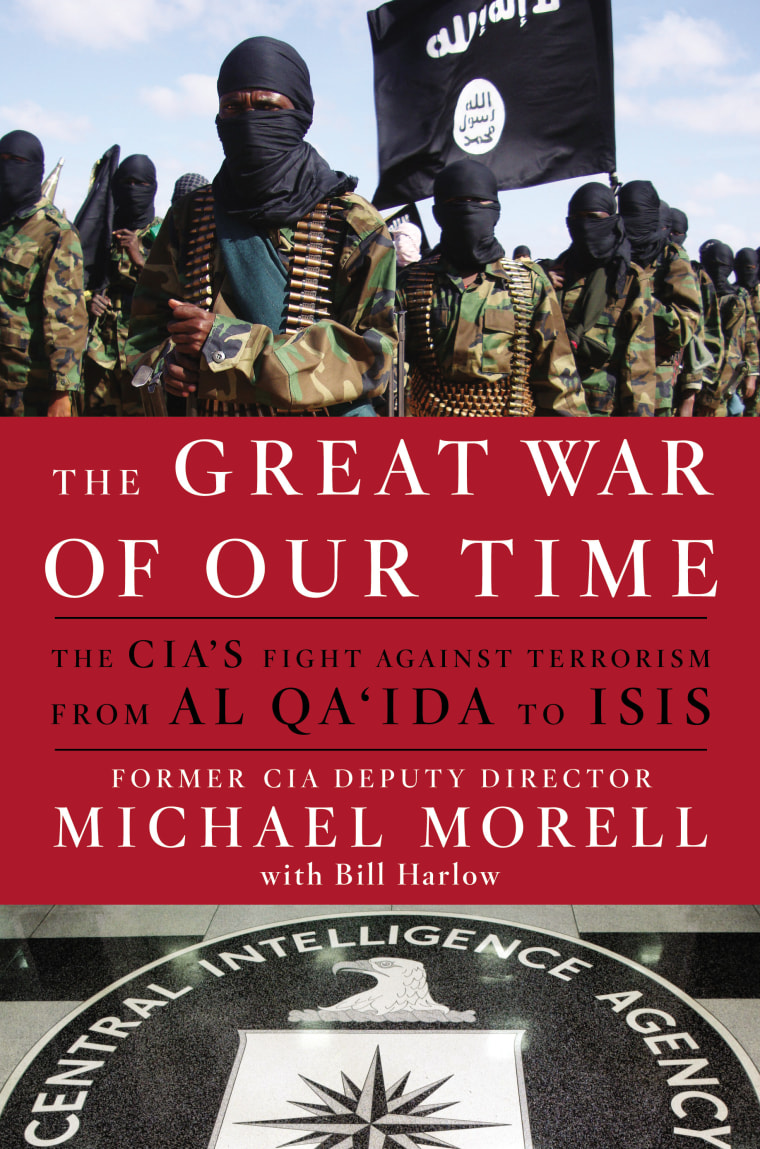Preface
In early October 2013— just weeks after my retirement— I received a phone call from a good and trusted friend. He asked me to consider writing a book. I said, “No, that is not what professional intelligence officers do,” but as I thought about the phone call, I changed my mind. Three things led me to this conclusion— and to this book. First, I wanted to tell the remarkable story of CIA’s fight against the group that killed nearly three thousand people on that beautiful sunny morning in September 2001. No department or agency has done more to keep the country safe than CIA, and I wanted Americans to know that.
Second, without putting our operations at risk, I believed more can and should be shared with the American people about what the Agency does every day. This is important because popular culture creates many myths about the Agency. One is that the Agency is all-powerful— that there is no secret it cannot steal or discover, no threat it cannot disrupt, and no adversary it cannot defeat. This is the “Jack Ryan” myth from countless Tom Clancy novels. Then there is the opposite view, that the Agency is incompetent, made up of people who screw up everything they touch. This is the “Maxwell Smart” myth from the 1960s TV series Get Smart and the 2008
movie with the same title. Finally, and most perniciously, is the notion that CIA is a rogue agency— sometimes succeeding, sometimes failing, but always pursuing its own agenda, all without the authority, direction, or control of America’s elected leaders. This is the “Jason Bourne” myth, from the wildly popular book and film series.
The truth is that all these myths are wrong. CIA gets many things right and a few things wrong. And in my experience CIA officers always did what they thought was best for the country, and they undertook operations only with the approval, authorization, and direction of our nation’s elected leaders. Creating an accurate picture of CIA is important because the Agency is a secret organization operating in a democracy, and the American people need to have confidence that the Agency is functioning both effectively and within the Constitution and laws of the United States.
Third, and most important, I wanted to tell Americans how deeply concerned I am about the threat that remains to our country from al Qa‘ida and various groups associated with it. The threat of terrorism has not gone away. It did not die in Abbottabad along with Bin Ladin. It is going to be with us for decades to come, and as a nation we must be prepared. If we are not, we will, with certainty, face another devastating attack on our homeland.
Taken together, these three reasons are why I decided to write a book and why I decided to focus it on the Agency’s fight against terrorism— the great war of our time.
* * *
In July 2013, the threat reporting coming out of Yemen skyrocketed. The intelligence was clear— al Qa‘ida in the Arabian Peninsula (AQAP), the al Qa‘ida franchise most closely tied to the al Qa‘ida leadership in Pakistan and the one posing the greatest threat to the United States, was planning attacks against American interests. The reporting pointed to multiple targets and attacks of significance. But, as is almost always the case, the intelligence was frustratingly lacking in details— about targets, locations, and timing.
The hope of a quiet last few weeks on the job turned out to be wishful thinking. I had to cancel many of the visits I had planned throughout the Agency to say thank you to the women and men of CIA for all the hard work that they do for the country and all the work they had done for me as deputy director (and twice acting director). My days, evenings, and nights—
Including the birthday dinner— were now consumed with the new threat reporting.
Our counterterrorist experts briefed me multiple times a day, and I took their information and analysis to the National Security Council’s Deputies Committee— a policy-making forum of the number two officials from the most important national security departments and agencies in the US government. The Deputies Committee is where departments and agencies share information to understand issues, develop strategies to deal with them, and make policy recommendations to the “principals”— the heads of their agencies— and ultimately to the president. I told my colleagues, “This is the most serious threat reporting I have seen during my three and a half years as deputy director.”
They paid attention. The deputies recommended actions to our bosses on the Principals Committee and to President Obama. The president made decisions to protect our diplomats and to disrupt the terrorists. He ordered embassies in the region closed for a number
of days— with some sending their employees home to make the US footprint smaller.
And he ordered a flurry of drone strikes in Yemen. The targets of the drones were those AQAP members the United States knew were at the center of the attack plotting. This action was successful. The plot, which turned out to be simultaneous AQAP attacks against US diplomatic facilities in Yemen as well as Yemeni military facilities, was disrupted. It was called off because many of the key operatives involved in the plot had been killed by US air strikes. Hundreds of lives were saved. It was another in a line of unheralded intelligence and military successes in the war against al Qa‘ida. And it was the last issue in which I was involved as an intelligence officer— my final engagement in a war that had defined my career.
